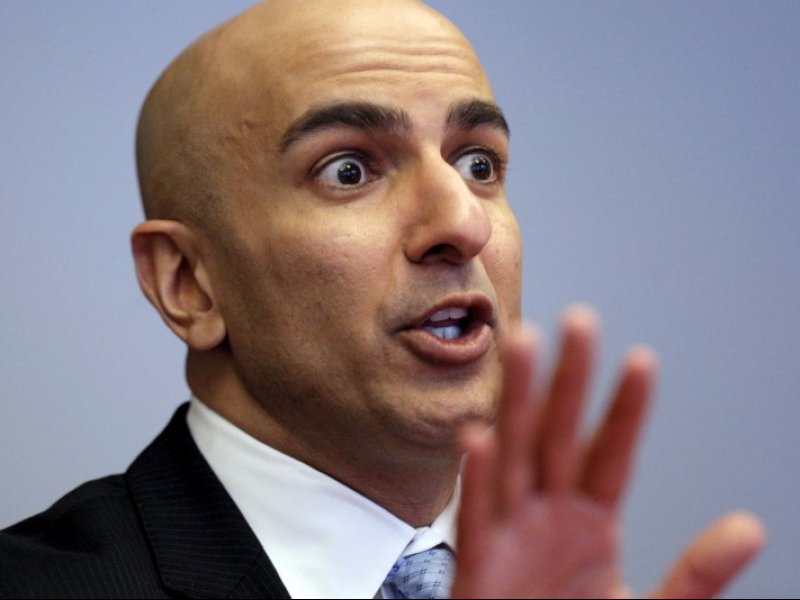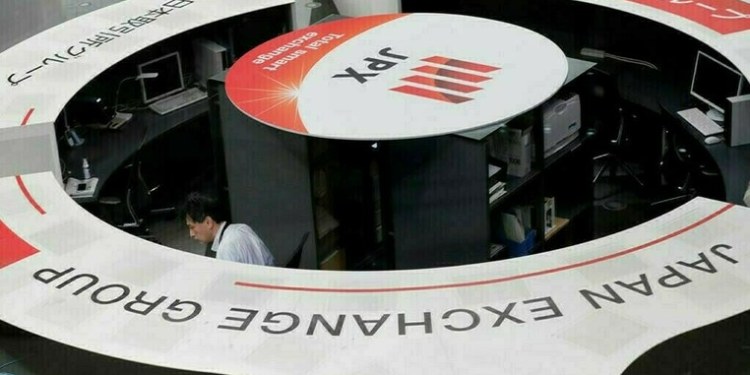 © Thomson Reuters, Minneapolis Fed President Neel Kashkari speaks during an interview at Reuters in New York
© Thomson Reuters, Minneapolis Fed President Neel Kashkari speaks during an interview at Reuters in New York- The Minneapolis Fed released a “Final Plan to End Too Big to Fail” aimed at addressing the issue of banks seen as benefiting from implicit taxpayer backing.
- As the financial crisis turns 10, there is internal discord at the Fed as to whether post-crisis financial rules solved the problem
- Incoming Fed Chair Jerome Powell told Congress there are no more too-big-to-fail banks, citing new tools regulators have to wind them down.
- A report from the Treasury’s Official of Financial Research suggests that toolkit is far from complete, and may not be ready in time for the next crisis.
The Federal Reserve is a consensus-driven institution, but that doesn’t mean sharp internal disagreements do not arise on a fairly regular basis.
This time, the disagreement centers on banks that, because of their size and interconnectedness to the financial system, have been considered “too big to fail,” meaning they are likely to receive taxpayer bailouts if they run into serious trouble. These include giants like JPMorgan (NYSE:), Bank of America (NYSE:), Citigroup (NYSE:) and others. They are seen as underpinning too much of America’s financial network to be allowed to falter.
Incoming Fed Chair Jerome Powell, who will be taking over for Janet Yellen at the start of next month, declared during his confirmation hearing to the Senate Banking Committee, that the problem of banks benefiting from such de facto taxpayers subsidies was a thing of the past.
He argued the Fed now has the tools to wind down large financial firms without causing ripple effects, including drafts of “living wills” on how banks would be portioned off in case of failure and so-called resolution authority that allows for more aggressive interventions that were not available before the 2008 financial meltdown.
However, a new report from the Minneapolis Fed highlights an internal divide that will come to a head after Powell takes office. The regional Fed’s president, Neel Kashkari, a former Goldman Sachs (NYSE:) banker, has been vocal about doing more to address megabanks that pose systemic threats in the wake of the worst financial crisis since the Great Depression.
As the financial crisis reaches its 10th anniversary, Kashkari has released a “Final Plan to End Too Big to Fail.”
It argues that “leaving capital requirements at current levels leaves taxpayers at risk of a future crisis and bailout.”
Kashkari warned in a statement that “American taxpayers are still on the hook today. There is no excuse for inaction, and history will judge us poorly if we so soon forget the lessons we just learned.”
Mission not accomplished
Kashkari’s view is more in line with market perceptions of large banks, which are still seen as largely shielded from catastrophic losses by implied government support.
“Dodd-Frank did a lot of things, but ending Too Big To Fail can’t be listed among its accomplishments,” Isaac Boltansky, director of policy research at Compass Point, told Business Insider recently.
“The system is far safer given the capital and liquidity rules, and new mandates such as living wills and orderly liquidation authority should blunt panic in a crisis, but I doubt anyone in Washington or on Wall Street truly believes the federal government would stand idly by in the event of another systemic banking crisis.”
For that reason, the Minneapolis Fed’s plan calls for regulators to “dramatically increase common equity capital for banks with assets exceeding $250 billion,” forcing them to to issue common equity equal to 23.5% of risk-weighted assets, with a corresponding leverage ratio of 15% — nearly three times the current level.
The report also calls on Treasury to certify that individual large banks are no longer systemically important or else subject those banks to extraordinary increases in capital requirements—up to 38% over time.
In order to tackle potential problems outside traditional banks, in non-bank financial firms that compose the “shadow” banking system, the plan would also impose a tax on the borrowings of such firms with assets over $50 billion.
A separate account from the Treasury’s Office of Financial Research also suggests that, despite Powell’s optimism, the toolkit for dealing with too big to fail is still far from complete
“Resolution under either US bankruptcy law or a special resolution authority has potential weaknesses for handling global systemically important bank failures in some scenarios,” the OFR said in its annual report last month. “The treatment of derivatives held by a failing financial firm continues to present a conundrum for policymakers seeking to balance contagion and run risks against moral hazard concerns.”
Moreover, the ability to wind down nonbank financial firms “remain less developed than for banks, despite the material impact of some nonbank failures in the past and the growing importance of nonbanks, particularly central counterparties, in the financial system.” Shadow banks can include everything from hedge funds and private equity to insurance and mutual funds. One of the biggest flashpoints of the 2008 crisis came from just one such institution — insurance giant AIG, which required multiple bailouts.
Kashkari makes a case for taking preemptive steps against a future shock sooner than later.
“With today’s strong economy, now is the perfect time to act to strengthen our financial system,” he said. “We must not wait, and we must not go backwards. If we wait until the next crisis to implement these reforms, it will be too late.”
Source: Investing.com


























